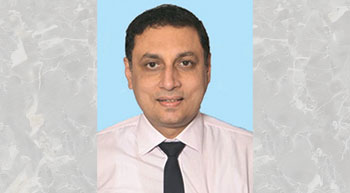Though the government is ushering in major port-related infrastructural changes, clearances and related procedures on the ground have to be simplified, says Ivan Da Costa, President, Global Ocean Group and ex-Superintendent, Customs.
What are the challenges you face as a logistics company in India?
Roads connecting the docks and air cargo complexes of container freight stations are in a very bad condition, hence this creates very bad congestion. There should be convenience; intermodal transport will be successful only when we have proper rail and road connecting infrastructure. Also, there should be less bureaucratic involvement in processing and for Customs clearances, like in other places of the world. To compare internationally, you can sit in Los Angeles and do Customs clearance in any part of the US online. Here, you have to be physically present every time you are doing a Customs clearance. Even material handling technologies are outdated. However, the new equipment we require are very expensive. Currently, we also feel the inconvenience in the container freight stations and in port handling. There surely has to be a more convenient, mechanised system for faster clearances and cargo handling.
Surely, we do have the equipment? What equipment are you talking about?
Let me make another international comparison. In Singapore, a full ship can be de-stuffed in a couple of hours. In India, the same ship would take a whole day or even two days, depending on the size of the vessel and how much has to be loaded back on. We need proper equipment – cranes, etc. The fact is India does not have the cranes to de-lift certain types of cargo and this is therefore done by the vessel itself as these carriers carry the appropriate cranes with them. Otherwise, this cargo cannot be de-stuffed in some ports in India.
After this is done, taking it to the destination is again a bigger challenge and very few players are there in this industry where heavy-lifts are concerned. We do not have the proper roads, equipment to lift the cargo, or the trucks to carry them. There are limited trucks and those that are coming are very expensive and they require the roads also to take that kind of cargo. I am referring to over-dimensional cargo (ODC).
Our roads network has developed of late…
What about government permissions?
Yes. That is another major problem. Permissions are a big mess. Nowhere else in the world do you face such a situation. Here, permissions are needed from each and every Regional Transport Office (RTO) to be able to move in the area under the jurisdiction of the RTO. You need the local authorities to be there while the vehicles are crossing. There may be electric wires and things like that which are at a lower height. How does one deal with such situations? Nonetheless, we have done a lot of projects with MFC Carriers who are pretty good at handling break-bulk cargo. Once we had to go through a month-long procedure to break a wall, and second, to reconstruct it again, because of lack of equipment.
How do you view the Sagarmala and other infra projects envisaged by the current government?
Any infra project that comes up is very encouraging as it provides convenience to logistics. The current government´s plans and projects are exemplary but the only problem here is that there is a big slip between the cup and the lip. How long are these going to take? That is more important; and how effective will they be? Some connectivity projects have been planned. However, what about the containers? How can anyone find a particular container if they are dumped in such large numbers at a spot? A negative impact is created in front of foreign investors and vessel owners.
The vessel owners also do not want to bring their vessels here because their vessel has to lie for two days on stream, because they don´t get a berth due to strikes arising out of labour and other such related issues, which makes things unpredictable. Secondly, I wonder if progress means only developing our infrastructure but not simultaneously looking at simplifying clearances and related procedures. On an average, a clearance procedure takes two-three days. Sometimes some procedures from certain agencies take such a long time that it not only increases the cost for the importer/exporter but it is also discouraging to do business.
In India, fantastic plans are made but implementation has always been the issue.



Leave a Reply
You must be logged in to post a comment.